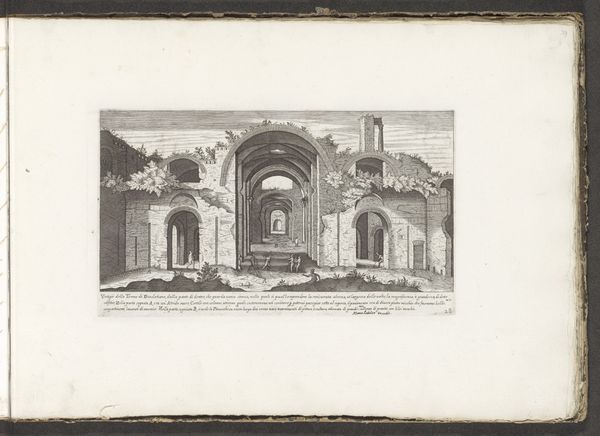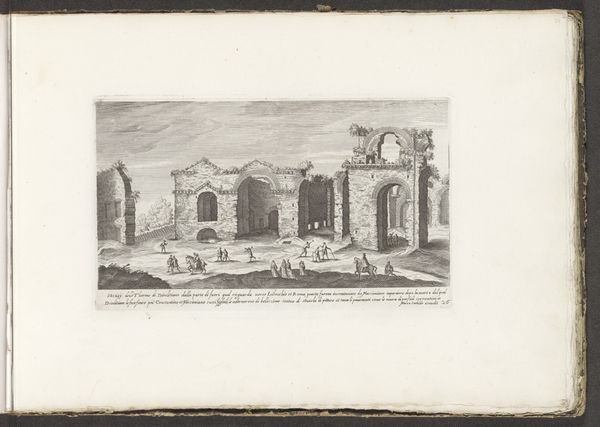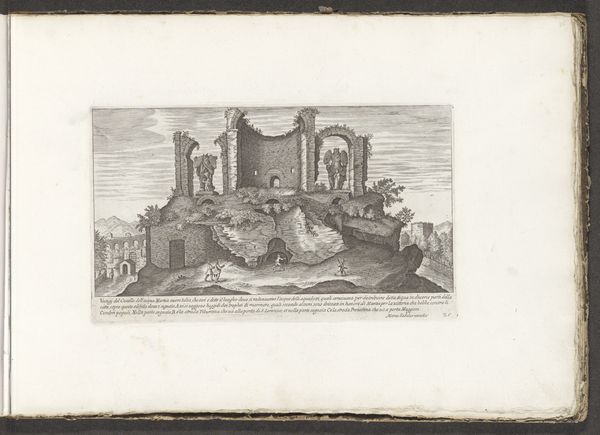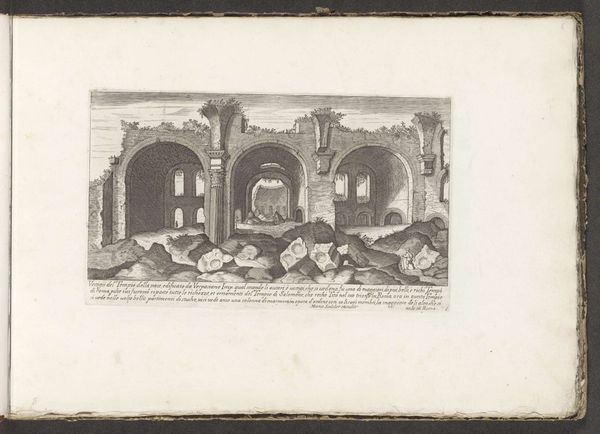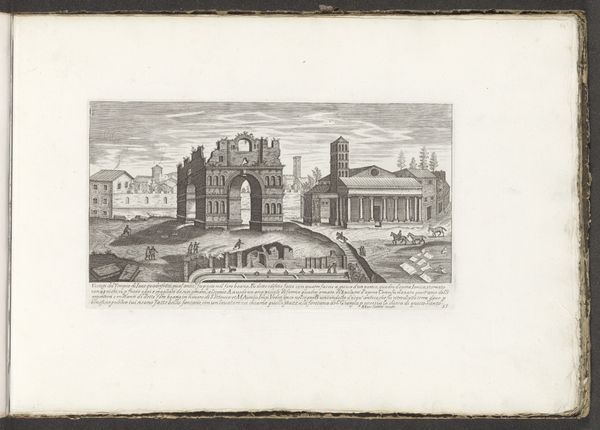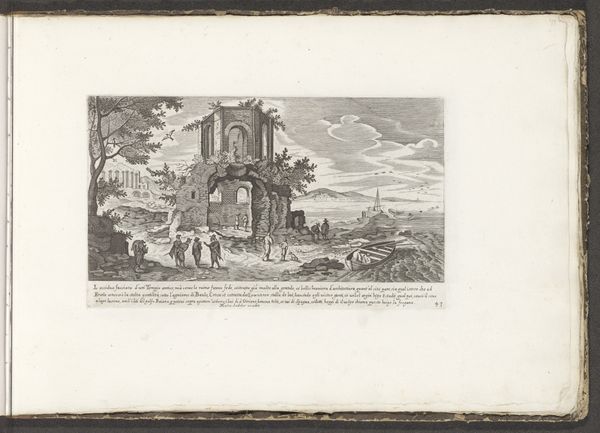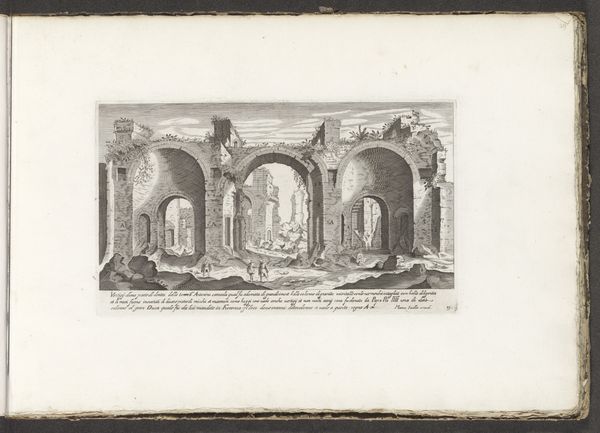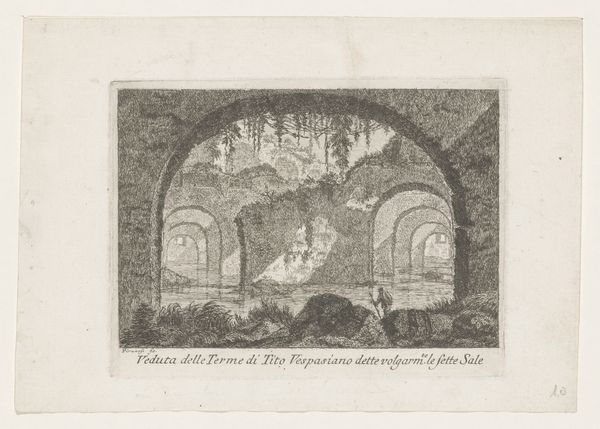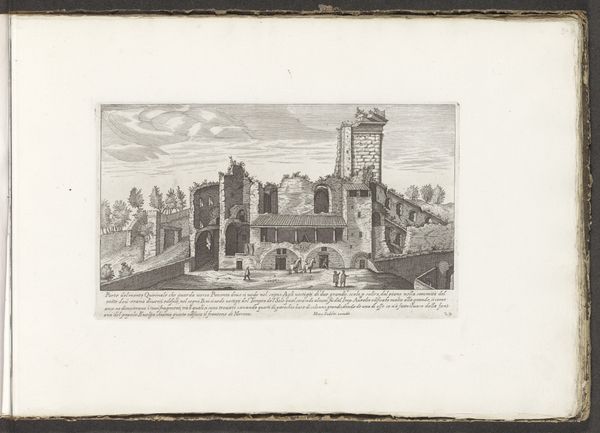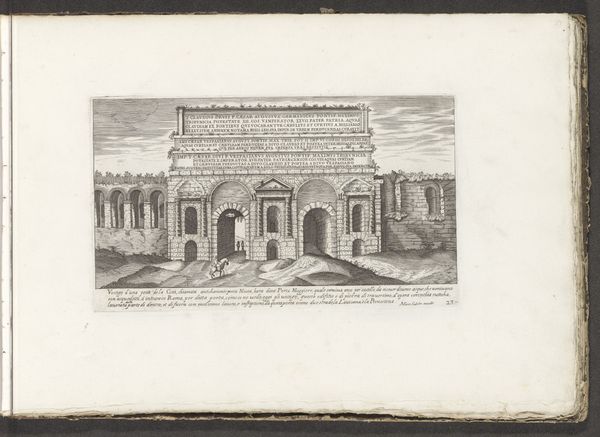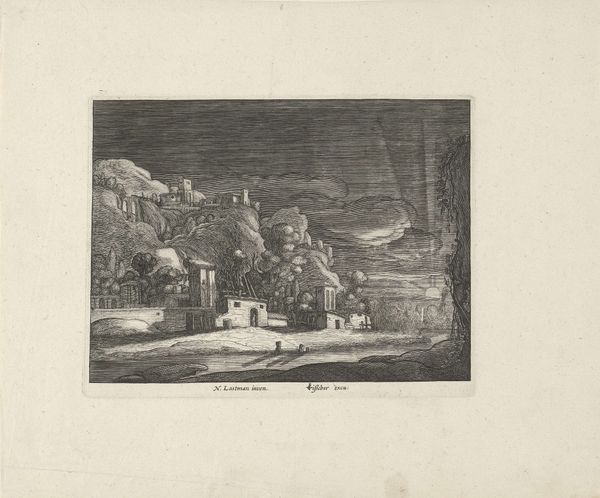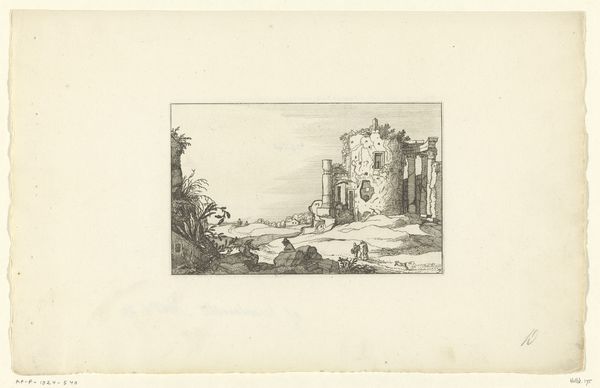
drawing, print, paper, ink, engraving
#
drawing
#
baroque
# print
#
landscape
#
paper
#
ink
#
cityscape
#
engraving
Dimensions: height 156 mm, width 274 mm
Copyright: Rijks Museum: Open Domain
Editor: This engraving from 1680 depicts the interior of the Baths of Caracalla. The artist is anonymous, and it's crafted with ink on paper. It's quite evocative; the ruinous state emphasizes a feeling of time passing and lost grandeur. What aspects of this work stand out to you? Curator: I’m struck by the material record itself. This isn't just a representation of a classical site; it’s an artifact of Baroque printmaking. The labor involved in producing this engraving – the craftsman's skill with the burin, the ink, the paper – tells us as much about 17th-century print culture and the commerce of images, as it does about the ruins of Rome. What kind of person do you imagine owned a print like this? Editor: Someone perhaps interested in the classical world, a traveler perhaps? Curator: Indeed, and let's consider *why* the ruins of Rome held such fascination. This image enters into a history of the representation of labor too: the manual labor required to erect the baths of Caracalla, the exploitative nature of Roman construction employing armies of enslaved artisans, now countered by the highly-skilled labor involved in capturing that labor as depicted through the act of printing, and mass production via reproducible image. Look closely at the quality of line used to depict the weathered stone; consider the consumption of classical imagery in contrast to religious imagery for instance, where do we see examples of devotional images presented with such open interest in material decay? Editor: So, it’s not just about the Roman Empire’s architectural achievement, but the system that enabled those achievements and our perception of ruins as physical evidence of a bygone production system. The engraving itself also represents a new, updated process of artistic manufacture via print. Curator: Precisely! The material reality of both the subject and the object – the baths and the engraving – speak volumes about the cultural and economic forces at play. Editor: I’ll never look at old prints the same way again. It’s exciting to see the connections to society, labor, and manufacturing of historical images themselves.
Comments
No comments
Be the first to comment and join the conversation on the ultimate creative platform.
